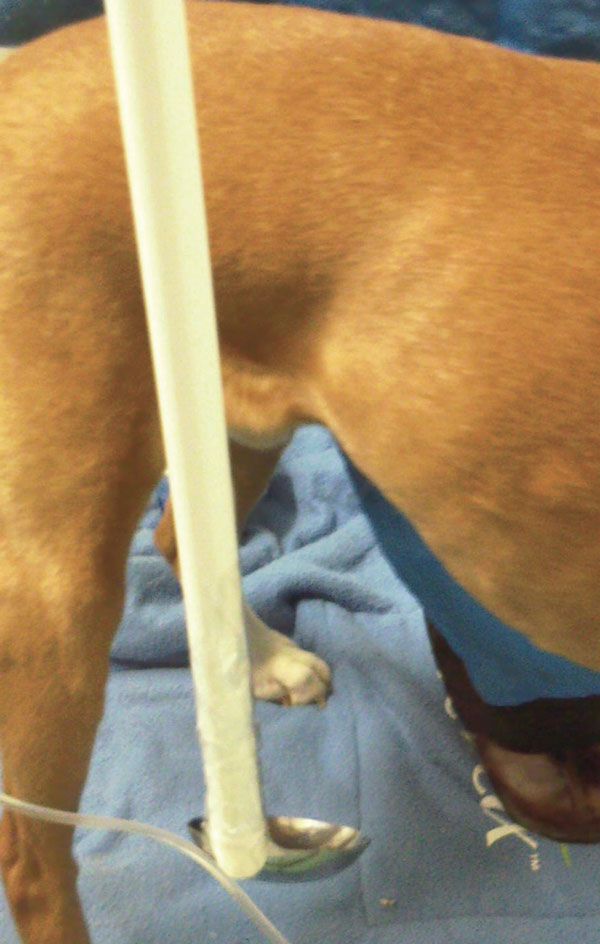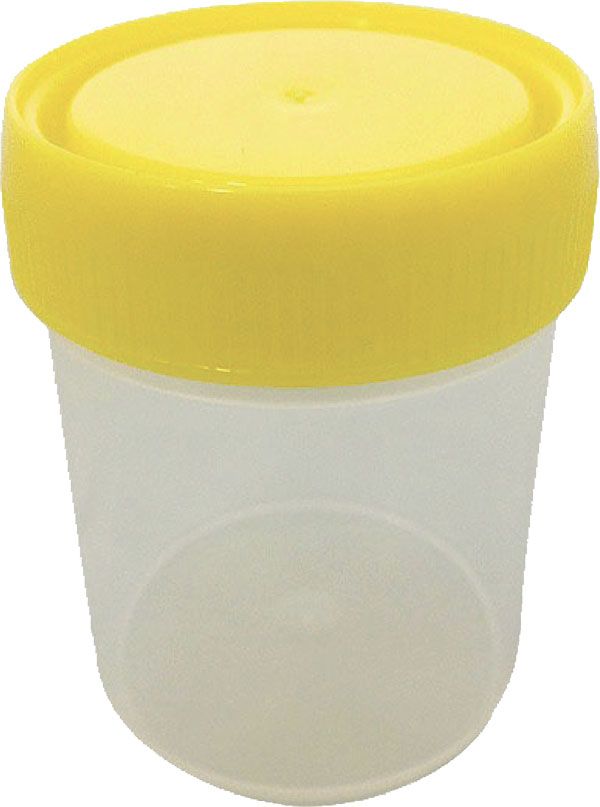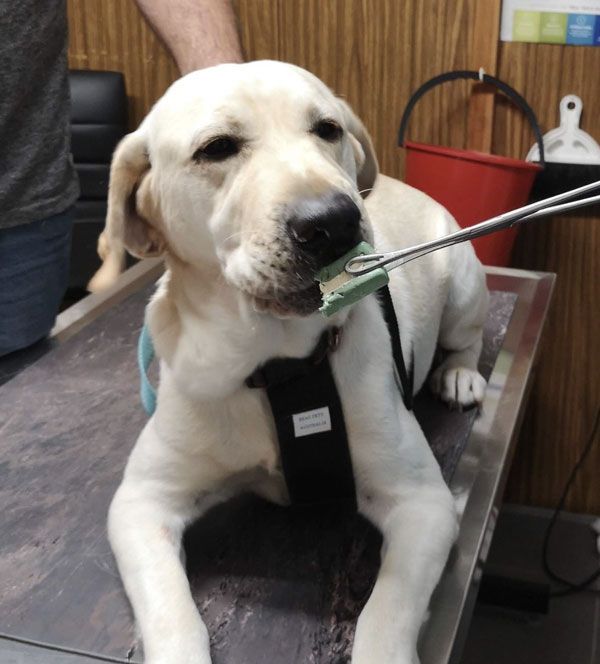Practical tips for canine and feline patients
Dr Aine Seavers MVB MRCVS shares what she describes as left-field but practical tips intended to help create a less stressful work environment for patients, clients and practitioners throughout 2024
1. Effective encouragement of euthanasia alternatives
My Australian partner has a blunt but effective response when faced with clients rushing into choosing euthanasia for the patient for financial reasons: “Dead is dead. There’s no ‘undo’ so maybe let’s put that euthanasia money towards an affordable Plan B first. If this option doesn’t fix the issue, then euthanasia at that point will be done at no charge.”
This approach potentially changes the consult dynamic and gives the owner options. Should the vet need to euthanise the pet for that specific issue sometime later, then providing the procedure free of any fee dramatically reduces negative views from the owner. You will not have placed another cost on the owner; instead, by allowing them to have at least tried to save their pet, a lot of the grief and angst the owner may have otherwise carried is averted. Most owners appreciate that gift from you to them, to their family, and to the memory of their pet.
2. Understanding hole-digging by dogs
I am getting cranky with the number of canine cases I see automatically mislabelled as boredom-driven hole diggers. When no intervention works to stop their digging, these dogs are placed on some form of drug therapy to address their presumed ‘boredom’. However, in many instances, these dogs are not bored.
When I worked in Dublin and London, some of the reasons for digging included live electrical cables underground and turbulence from water running in partially blocked underground pipes. In Australia, the more common cause of noise can be extra-large earthworms burrowing in their tunnels. Apparently, the gurgling noise that some of the large earthworms make in their burrows can be quite impressive. From my reading, it seems large earthworms are not confined to Australia so every vet, not just those here in Australia, needs to be alert to this trigger wherever they may practice.
When dealing with a canine ‘digger’, I suggest to owners that they hold back from attempting to stop the dog’s behaviour. I ask them to wait and observe, to see how the digging episode evolves.
Based on my experience, owners are subsequently likely to report back that the dogs suddenly pull up to a halt, turn one ear to the ground, place one side of their face on the ground, rub/run their face along the ground, and stop. Using mostly their nose, they core out a deep narrow hole, which they then carefully excavate with their front paws. Phenotypically, holes dug by these dogs are not the shallow crater holes of boredom: these are cored deep holes, usually in multiple. No behaviour modification pill stops this type of hole-digging.
If the cause is underground electrical cables, you may have to sort out a faulty electrical wire issue and if it is underground water pipes, you should check for blockages that might be creating turbulence.
Where earthworms are the trigger, the issue tends to be seasonal and is especially bad in March to September. Short of having the dog wear a muzzle 24/7, one has to keep the dog inside and restrict outdoor access to a supervised time as nothing will convince the dog not to dig.
The holes in Figure 1 were dug after two dogs had returned home from a long walk to and from the beach. The dogs were only back home in the yard for a few minutes when they commenced manic hole digging (at the bottom of said holes were earthworms).

Figure 1.
3. Urine collection
Often elderly or disabled owners have difficulty collecting urine samples at home from their dogs. A very handy way to collect urine is to use a spare kitchen flat-handled soup ladle (which if steel or aluminum can be at least cleaned and disinfected after each use). The ladle keeps the human’s hands safely away from the stream of urine, yet collects enough for basic sampling.
For the owner: make sure they etch/mark the ladle permanently so it is not used in the kitchen again by mistake.
To save the veterinary staff’s backs from too much bending and tying up too many staff just to collect urine in hospital runs or yards, in my practice we adapted this tip by firmly taping the ladle onto a spare broom handle. This allows one-handed collection by a sole nurse/vet while they are holding the lead and they themselves remain upright.
Make sure you or the client select the flat-handled ladle version, not the curved-end (for hanging up) version. The curved end won’t let the ladle handle sit flush against the broom handle. The ladle can be cut off from the broom handle afterwards and sterilised for next use. This collection method makes many dogs less nervous as they are often reluctant to urinate when humans stand too close to them.
I would suggest bringing the ladle closer to the body than shown in Figure 2 to avoid splashing and loss of sample. A smaller plastic ladle makes a better collection tray for small female dogs. If needing to get a sterile sample from a male dog, tape a sterile urine collection pot (see Figure 3), rather than the ladle, onto the end of the pole if need be.
Note: avoid the extended stick solution when working with Border Collie dogs. A behavioural paper in Europe some years ago stated Border Collie dogs specifically have an issue with humans carrying ‘sticks’ so best to resort to more traditional methods of collection for particular breeds of dog.

Figure 2: Urine collection with a ladle and broom.

Figure 3: Urine container.
4. Easing the euthanasia process for patient, client and practitioner
Euthanasia is one of the most important interventions we do as vets. Recently, I have been reading in veterinary forums and webinars about some impressive, but in the end over-complicated, pre-euthanasia protocols, many of which also involve removing the patient from the owner for catheter placement. I have never been comfortable with the need to separate a pet from its owner in its dying hours. Comments on social media sites reinforce how distressing many owners find this separation. We need to be able to offer other solutions to owners and patients.
In my team’s experience, a Zoletil sc injection, given pre-lethal solution injection, has been extraordinarily effective in reducing patient stress and handling challengens, as well as in decreasing both the client owner’s anxiety and the vet team’s stress levels.
Here is my suggested method:
Draw up Zoletil, roughly 0.5ml for a cat, 1 ml for a 10kg dog, 5mls (one bottle) for a larger dog e.g., St Bernard etc. but remain open to adjusting your dose per case.
Change your needle.
Slip the solution under the skin anywhere on the body that is safe to access.
Wait about five to 10 minutes for the drug to take effect.
Use those five to 10 minutes to organise the euthanasia and burial paperwork or simply sit and talk to the owner about the pet’s life. Alternatively, if the owner prefers, you can leave them to have some alone time with their pet. In the latter instances, I would often go see a quick recheck case while we waited, to keep from getting too far behind in my consultation list.
After 10 minutes, the dog/cat is now usually deeply sedated. We advise the client that the pet is now in a similar state to twilight anaesthesia and will not be aware, nor concerned by anything we now have to do.
The sedation doesn’t drop the BP so you can access a vein easily without any distress or struggle by the pet, which in turn reduces the veterinarian’s immediate stress (and increases their vein access success rate).
There is virtually never any agonal breathing which is much less distressing to the owners who stay until the very end with their pet.
We cost-price charge for the amount we use per ml in addition to the main euthanasia charge. As the Zoletil is billed totally at cost in this instance, it means this pre-sedation option is affordable to almost all owners.
There may be a positive effect of Zoletil on the onset of action of Lethabarb. Zoletil and Pentobarbital act on GABA receptors, as agonists enhancing the binding of GABA on this chloride channel receptor (Tranquilli et al. 2007, Lumb & Jones’ Veterinary Anesthesia and Analgesia, Fourth edition).
There had been a suggestion that Zoletil and similar drugs worked poorly in dogs with dementia.
I have not found that to be our personal experience. I also could find no literature to confirm the reduction in efficacy and neither could Virbac. Feedback from a Specialist in Veterinary Anaesthesia was that they too were not aware of any evidence in the literature documenting dissociative anaesthetics working poorly in dogs with dementia.
In those terribly sad cases, where an animal is truly left far too long before they are brought in for euthanasia so the pet is now in total circulatory collapse, it’s kinder on these patients to be pre-sedated with Zoletil before an intra-organ/cavity deposition of Lethabarb.
5. Maintaining a deaf dog’s focus while keeping your fingers safe
Frankie, a fit and unrestrainable two-year-old Labrador, now on his fourth home was presented to our clinic for a health check-up as part of my client’s decision process on whether to adopt him or not.
Apparently, no vet previously had been able to examine him without a physical struggle and/or sedation so previous owners and trainers had given up on him being teachable in any way.
Frankie’s real issue was only discovered at 18 months old, when he was surrendered to a charity programme where jail inmates trained dogs as therapy dogs for recovering addicts. It took the inmate handler all of one day to realise what no one else did – Frankie was profoundly deaf.
On presentation in my practice, Frankie was totally out of control and in perpetual motion. The only time he would stop moving was if you gave him food treats. The problem was he took your fingers off when feeding him. This bite was not done intentionally just exuberantly, but a bite is a bite regardless of the lack of malice behind it.
My solution was to take an old retired whelping forceps I keep to dislodge bones from a dog’s mouth/palate and clamped the forceps onto a big Oravet dental chew. This new device got Frankie’s attention so I had the nurse hold the device as if it was an ice cream or lolly stick and let Frankie chew on it. Frankie sat still so I could carry out a full – albeit super-fast – clinical exam while the chew was consumed down to just in front of the forceps. To protect Frankie’s teeth and the forceps, that last remaining piece was then removed and allowed to be free-grabbed by Frankie.
The Lolly made for far less mess than a lick mat (which he had tried to bite in half) and allowed more directional control in where we wanted him to be or in which direction we wanted him to face. We then threw some treats onto the floor to let him fun free to observe his gait and vision.
We continued to use the ‘Frankie Lolly’ across a wide range of nervous or behavioural canine cases with great success.
Since Frankie’s case, in the following five years, I have noticed an increase in young blond/yellow Labradors with poor or zero hearing. I had not previously associated this breed or colour with deafness so this is definitely an emerging trend of concern.

Figure 4: The ‘Frankie lolly’ - the patient is offered an Oravet dental chew clamped in a forceps.
6. Cyproheptadine - uses in feline asthma and canine behavioural barking
Cyproheptadine (Periactin) is sold relatively cheaply as an over-the-counter medication in pharmacies as 20 x 4mg tablets or on a prescription as a 100-tablet box. Cyproheptadine is an antihistamine with serotonin antagonistic effects. The drug’s main uses in veterinary medicine are:
a) in feline asthma to stabilize mast cells (it doesn’t work in asthmatic dogs for many reasons including lack of specific lung receptors)
The average dose is 2mg twice daily. Feline mast cells release high concentrations of serotonin, the primary mediator for smooth muscle constriction rather than histamine. Anti-histamines can worsen some feline asthma cases, so it is the serotonin antagonist effect of this anti-histamine that allows it to be one of the exceptions to the rule. Sedation effects fade away over 14 days and the cat returns to normal activities. However, some studies suggest it should never be used as a mono-therapy in feline asthma.2
b) as a canine anti-barking medication
I came to consider the use of cyproheptadine as a treatment for behavioural barking in dogs, having first observed the drug’s effect on Siamese kittens. The cyproheptadine was given to the kittens as an appetite stimulant post-recovery from herpes flare-up wherein I noticed some additional effects of the drug. The stressed, timid kittens actively sought out human company, but as the affection levels increased, the verbalisation or chatter – so characteristic of the Siamese breed – ceased, and the kittens became quiet. Cyproheptadine also made it easier to re-home the kittens, as it decreased the stress of relocating to a new environment (in the days when feline pheromone products were unavailable).
I wondered about achieving that ‘chilled-out’ effect in manic, stressed-out barking dogs, saw reference to its anti-vocalisation effect in some toxicities and so began to use the drug with dogs whose owners present in need of a rapid reduction of their dog’s manic barking. I would educate the client on all options and send the dog home on a 14-day cyproheptadine regime with great results.
This cheap medication gives the owner an immediate, affordable, and short-term fix for the problem. The less frantic owner can now re-establish a gentler, calmer bond with their pet instead of shouting at it. The efficacy wears off after 14 continuous days, but in that time, the veterinary practitioner has the opportunity to formulate a long-term treatment plan. Once the situation is back under some control, the vet can start to share behavioural modification advice, which the no-longer sleep-deprived client can understand and implement.
Cyproheptadine is not the mainstay of anti-barking treatment, it’s a rescue drug to give everyone time to calm down and time to think about designing a proper behavioural strategy or programme. I have used it effectively for 30 years now as part of, but in no way as the sole aspect of, my behaviour protocols.
The mean elimination half-life of 12 hours indicated that approximately 2.5 days must elapse to achieve steady-state concentrations of cyproheptadine after oral administration of multiple doses. A 12-hour dosing interval is acceptable, but an eight-hour interval may be indicated for some cats. Caution is advised where the patient has high potassium concentrations that may lead to GI tract ulceration or stenosis.1 The drug is contra-indicated in cases of hypertension so I avoid its use in elderly and renal patients.
7. Ocular meds – advice on avoiding some pitfalls
Following a surgeon’s botched attempts to fix an ocular issue of mine and enduring the subsequent slow post-op recovery and variety of topical medications thrust upon me, I observed a myriad of ways poor patient acceptance of many ocular meds must translate across into poor owner compliance and treatment efficacy in our vet patients.
Here are two examples of problems that can arise with frequently used ocular meds:
a) Prednefrin eye drops crystallize easily in the eye to become painful shards that irritate the nasolacrimal canthi. These crystals also block the nasolacrimal duct. To prevent these occurrences from happening to our patients, we as vets, must reinforce to owners the vital ‘shake and shake the bottle’ advice before they attempt to put any Prednefrin onto their pet’s eyes. The temperature of Prednefrin Forte and some other eye drops can become quite low if left sitting on a shelf or side table. Thus, when the ambient temperature drops, i.e., on a cold night, and said drops are sitting in the unheated bedroom, spare room, or garage, applying them is like dropping iced water on the painful eye. Shortly after application, said drops flow down the nasolacrimal duct and canals producing a painful sensation akin to having cryosurgery applied to the nasolacrimal system.
b) Chloromycetin ointments may be soothing on the eye, but the preparation can trigger a lot of sneezing. It is important to consider this risk issue, especially after delicate eye surgery. My suggested solution is as follows. When administering cold drops or cool room-temperature drops, first warm the eye medications. Don’t overheat the medication and risk denaturing it. Instead, aim for a gentle warming by placing the medication in your closed hand or on a tepid heating pad for a few minutes. Then, after first safety heat-testing on your arm skin, apply the tepid ointment/drops onto the painful eye in what should now be a soothing and tolerated application.
1. Norris CR, Boothe DM, Esparza T, Gray C, Ragsdale M. (1998): Disposition of cyproheptadine in cats after intravenous or oral administration of a single dose. In: Am J Vet Res. 1998 Jan; 59(1):79-81.
2. Schooley, E. K., J. B. M. Turner, et al. (2007). Effects of cyproheptadine and cetirizine on eosinophilic airway inflammation in cats with experimentally induced asthma. American Journal of Veterinary Research 68(11): 1265-1271.
Dowling, P. M. (2001). Options for treating feline asthma.Veterinary Medicine 96(5): 353-356.
Elliott, D. A. (2004). What do you do when cats won’t eat? Small animal and exotics. Book one: Alternative medicine - orthopaedics. Proceedings of the North American Veterinary Conference, Volume 18, Orlando, Florida, USA, 17-21 January 2004., Eastern States Veterinary Association
Gunja, N., M. Collins, et al. (2004). A comparison of the pharmacokinetics of oral and sublingual cyproheptadine. J Toxicol Clin Toxicol 42(1): 79-83
Mardell, E. (2008). Anti-emetic treatment of car-sick pets. Veterinary Times 38(17): 12...14.
Olmstead, M. L. and H. C. Butler (1977). Five-hydroxytryptamine antagonists and feline aortic embolism. Journal of Small Animal Practice 18(4): 247-259.
Padrid, P. A., R. W. Mitchell, et al. (1995). Cyproheptadine-induced attenuation of type-I immediate-hypersensitivity reactions of airway smooth muscle from immune-sensitized cats. American Journal of Veterinary Research 56(1): 109-115.
Reinero, C. R., K. C. Decile, et al. (2005). Effects of drug treatment on inflammation and hyperreactivity of airways and on immune variables in cats with experimentally induced asthma. American Journal of Veterinary Research 66(7): 1121-1127.
Robins, G. M., G. T. Wilkinson, et al. (1982). Long-term survival following embolectomy in two cats with aortic embolism. Journal of Small Animal Practice 23(3): 165-174.
Scott, D. W., W. H. Miller, Jr., et al. (1992). Failure of cyproheptadine hydrochloride as an antipruritic agent in allergic dogs: results of a double-blinded, placebo-controlled study. Cornell Veterinarian 82(3): 247-251
Wold, J. S., D. S. Longnecker, et al. (1971). Species dependent pancreatic islet toxicity produced by cyproheptadine: alterations in beta cell structure and function. Toxicol Appl Pharmacol 19(2): 188-201.
Serotonin Syndrome- Vet Toxicology- Basic and Clinical Principles, Ed Gupya London
Which of the following is correct? Cyproheptadine acts as:
A. An antihistamine
B. A serotonin antagonistic
C. An NSAID
D. An anti-fungal
2. Triggers for a dog to dig holes are:
A. Inappropriate environmental stimulation
B. Blocked underground water pipes
C. Large earthworm subsoil activity
D. All of the above
3. Which of the following is correct? Most topical eye medications should:
A. Be stored in the fridge, removed, and applied immediately as cold as possible directly onto the pet’s eyes
B. Never be shaken well before applying to the pet’s eye
C. Be heated to above body temperature before application to the eye
D. Be removed, gently warmed in the hand, etc. (< 24C) shaken correctly to re-suspend, then applied to the eyes
4. From which breed has the author noted a worrying increase in the number of dogs with hearing loss?
A. Boxer
B. Bull Terrier
C. Dalmatians
D. Labrador
ANSWERS: 1A and B; 2D; 3D; 4D.














